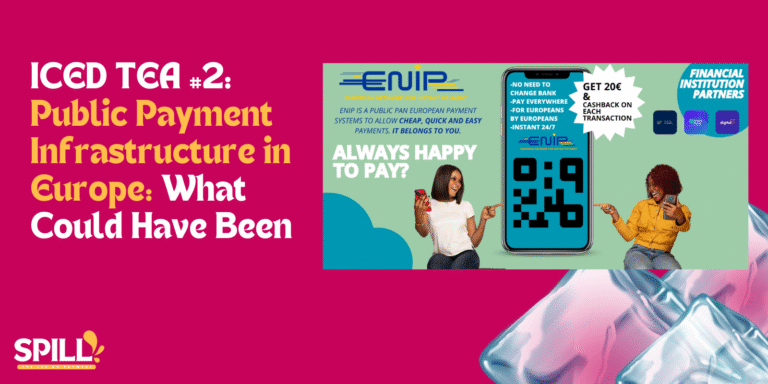Have a plan? In today’s interconnected world, payments are not just financial transactions. Payment is increasingly becoming a geopolitical tool. Read my recent article, on market protection. Strategising your payment geopolitical dependency is key. Recent events have shown how swiftly political decisions can disrupt global payment networks, stranding businesses and consumers.
Take the Russian invasion of Ukraine in February 2022. What happened in response? Visa and Mastercard halted operations in Russia within days, cutting off Russian businesses and consumers from international payments. This sudden move left students abroad unable to access funds, brands struggling with refunds, and Russian shoppers unable to use their cards overseas. Payments have been caught in the crossfire of politics and policy many times before:
- India (2016): The government demonetized 500 and 1,000 rupee notes overnight, disrupting commerce. 86% of Indian cash disappeared.
- Türkiye (2025): Public institutions and all related must use Troy domestic network exclusively, aiming at reducing dependence on Visa and Mastercard.
- European Union (2020s): The PSD2 rollout forced double authentication for online payments before many businesses were ready, leading to confusion and last-minute deadline extensions.
These events should not be taken just as « regulatory hurdles ». They can become a threat to businesses that rely on stable payment flows. Yet, many companies remain unprepared for sudden geopolitical shifts.
If there is a threat, you need a plan. Find a 5-step actionable strategy to help your businesses map risks, diversify payment options, and prepare for unexpected disruptions.

Step 1: Find the weakest link
Strategising your payment geopolitical dependency means you should be conscious of which providers are at risk of sanction or restriction. Anticipating not the sanction but the potential victim is always better than discovering it the day it happens.
Key actions:
- Identify which countries, networks, and banks your business relies on.
- Map out your payment processors, acquirers, and settlement banks across regions.
- Review existing contracts: Do you have clauses that protect your business if a provider exits a market suddenly?
- Evaluate currency risks: Could your cross-border payments be affected by currency restrictions or capital controls?
✅ Actionable Step: Create a geopolitical risk map for your payment ecosystem, rating them according to the risk from low to high.
Step 2: Don’t be exclusive, have multiple partners
Relying on a single payment service provider makes your business vulnerable to geopolitical decisions, especially if this provider is located in a hotspot of geopolitical tension without dependencies outside of the region.
Key actions:
- Work with multiple acquirers and PSPs across different jurisdictions.
- Support local card schemes where relevant (e.g., RuPay in India, TROY in Turkey, Mir in Russia).
- Offer non-card-based payment methods (e.g., Alipay, WeChat Pay, PIX, SEPA instant payments) in your critical markets.
- Explore digital wallets and cryptocurrency options as contingency plans.
✅ Actionable Step: Implement a multi-acquirer and multi-network strategy to ensure resilience in case one provider is disrupted, with acquirer locally and overseas.
Step 3: Drill, baby, Drill
Businesses assume payment systems will always work until they face massive disruptions that paralyse their transaction flow. You identified your weaker links and minimised their impact. You did 80% of your job. Now, anticipate your 20% and have a scalable answer in case of disruption.
Key actions:
- Develop a crisis response team for payment-related disruptions. Not a technical squad, but a cross-expertise squad adapted to geopolitical matters (liquidity management, banking and acquirers relationship, payment operations)
- Establish alternative liquidity channels in case of restricted access to funds.
- Test emergency refund strategies: If customers can’t use their cards, how will you process refunds?
- Consider alternative settlement solutions (e.g., direct bank transfers, stablecoins, or vouchers) for high-risk flagged markets.
✅ Actionable Step: Conduct a payment disruption drill—simulate a scenario where one of your key payment methods is suddenly unavailable.
Step 4: Visualize the waves to surf on it.
Key actions:
You cover it all. identified, minimised, and drilled. But strategising your payment geopolitical dependency is not finished, you need to be proactive and anticipate to optimise your strategy. Governments and regulators can impose payment restrictions overnight, and businesses need to be proactive to see the waves coming instead of drowning.
- Monitor real-time updates on sanctions, compliance changes, and regulatory shifts.
- Establish a dedicated compliance team or work with legal advisors to assess risks in key markets.
- Engage with regulators, industry groups, and local PSPs to understand upcoming policies.
- Prepare for central bank digital currencies (CBDCs) and alternative state-controlled payment systems that could reshape international transactions.
✅ Actionable Step: Set up geopolitical risk alerts for payment-related developments in your key markets
Step 5: United, we are stronger
Payment disruptions impact multiple teams—finance, operations, customer service, and even marketing, so always align regularly with your teams to be prepared.
Key actions:
- Train finance, treasury, and risk teams on geopolitical payment risks.
- Ensure your customer service teams know how to handle refund issues during payment disruptions.
- Update your leadership team on payment sovereignty trends and how they could impact your business.
- Regularly review and update your contingency plans based on global events.
✅ Actionable Step: Hold a regular briefing for stakeholders on payment risks and mitigation strategies on progress. The briefing recurrence can be adapted accordingly to the criticality.
Geopolitical payment shockwaves are becoming a new normal, be prepared!
The days of assuming seamless global payments are over. Strategising your payment geopolitical dependency is now key. Businesses must recognize that payment networks are political battlegrounds, and regulations can shift overnight.
By following these five steps, your business can:
- Identify vulnerabilities and mitigate risks.
- Diversify payment partners to avoid single points of failure.
- Have a solid contingency plan in place for payment disruptions.
- Stay informed and adapt to regulatory changes.
- Align internal teams to respond effectively to geopolitical shocks.
The next payment disruption won’t come with a warning. Will your business be ready? Do you have a strategy to surf the geopolitical shockwaves?










